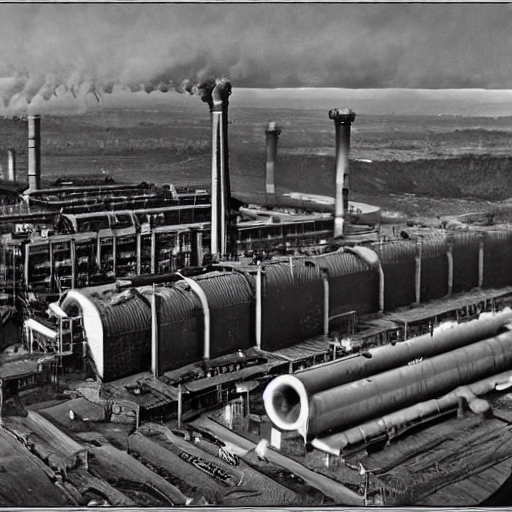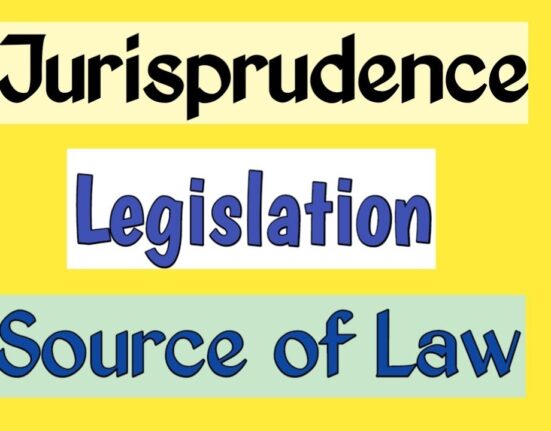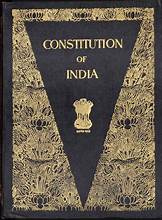Kanishka Singh, a 5th-year law student from MIT World Peace University has written this article explaining The Industrial Employment (Standing Orders) Act, 1946.
Introduction
The Industrial Employment (Standing Orders) Act, 1946 is a significant labour legislation in India. It plays a crucial role in regulating the terms and conditions of employment in industrial establishments. Enacted on April 23, 1946, by the Indian legislature, the act aims to establish a framework for defining and maintaining discipline, order, and fairness in the industrial workplace.
The Indian government intended to advance industrial peace, peaceful employer-employee relations, and social justice in the industrial sphere by passing the Industrial Employment (Standing Orders) Act, 1946. The act aims to preserve a balance between the interests of employers in effectively running their businesses and the rights of employees to fair treatment, job security, and a respectable workplace. It still plays a crucial role in regulating the employment relationship and enhancing the general welfare of India’s industrial workers.
In order to balance the interests of employers and employees, the act acknowledges the dynamic nature of labour relations. Both parties are made aware of their rights, duties, and expectations within the employment relationship by providing a statutory mechanism for the creation and certification of standing orders.
The objective of The Industrial Employment (Standing Orders) Act 1946
There was a lack of clarity regarding an employer’s employment terms prior to the passage of the IESO Act. Workmen were hired on an individual contractual basis at the time, and most contracts were either express or implied. This resulted in a misunderstanding of expectations between the employer and the workers.
In many cases, the hiring terms and conditions were ambiguous, resulting in conflict between workers and management. The lack of rules governing job security, fairness, and disciplinary action on minor issues was a source of concern for industrial workers. There was no provision for dismissal without cause or for wrongful termination. The workers were not protected from any disciplinary actions that were taken against them. There was no provision for wrongful termination or abrupt dismissal.
The workers had no protection against any disciplinary actions taken by the employers because there were no guidelines or rules in place to protect their interests. Even if there was a standing order, there were no specific guidelines to follow or legislation governing its enforcement.
Hence, the Act’s objective as mentioned by the Hon’ble Supreme Court in, Agra Electric Supply Co. Ltd. v. Aladdin[1]along with in, U.P. Electric Supply Co. Ltd. v. Their Workman[2];
“That the object of the Act is to have uniform Standing Orders providing for the matters enumerated in the Schedule to the Act, that it was not intended that there should be different conditions of service for those who are employed before and those employed after the Standing Orders came into force and finally, once the Standing Orders come into the force, they bind all those presently in the employment of the concerned establishment as well as those who are appointed thereafter.”
Purpose of The Industrial Employment (Standing Orders) Act 1946
The promotion of standardisation in employment practises across industrial establishments is one of the main goals of this Act. To do this, it mandates that employers create certified standing orders that specify the guidelines that apply to different facets of employment. It includes working hours, leave policies, disciplinary processes, and grievance redressal mechanisms. These standing orders promote clarity and uniformity in the workplace by acting as a thorough code of conduct for both employers and employees.
It emphasises the value of transparency and collaboration between employers and employees. In order to ensure that all employees have access to the policies and guidelines governing their employment. It requires that the certified standing orders be prominently displayed in the workplace. Furthermore, in order to facilitate understanding and adherence to the established norms. The act mandates that the standing orders be translated into the local tongue that is spoken by the majority of the workforce.
Not only the Act establishes the framework for employment laws, but it also offers a procedure for resolving disagreements and complaints regarding standing orders. It establishes a procedure for grievance resolution in which employees can bring complaints to the Certifying Officer. Such officer will then look into them and issue a ruling.
A fair and effective dispute resolution procedure is offered by this mechanism. It guarantees that employees have a channel through which to address any perceived violations of their rights.
Applicability
This Act requires employers in industrial facilities to clearly specify employment conditions and submit their standing orders for certification to the certifying Authority. It is applicable to:
- Appellate Authority: Refers to an authority appointed by the appropriate Government to exercise appellate functions under this Act. In certain cases, an Industrial Court or other authority may be considered as the appellate authority for pending appeals.
- Appropriate Government: The Central Government is the appropriate Government for industrial establishments under its control. It includes Railways, major Ports, mines, and oil fields. For all other cases, the State Government is the appropriate Government. The Central Government has the power to decide if an industrial establishment falls under its control.
- Certifying Officer: Includes a Labour Commissioner, Regional Labour Commissioner, or any other officer appointed by the appropriate Government to perform Certifying Officer functions.
- Employer: The owner of an industrial establishment covered by this Act. It includes the manager of a factory, the authority appointed by the government for industrial establishments under its control. Also, the person responsible for the supervision and control of other industrial establishments.
- Industrial Establishment: Encompasses various types of establishments, including those defined in the Payment of Wages Act, 1936, factories under the Factories Act, 1948, railways under the Indian Railway Act, 1890, and establishments employing workmen under a contract with an industrial establishment owner.
- Prescribed: Refers to rules prescribed by the appropriate Government under this Act.
- Standing Orders: Rules related to matters specified in the Schedule of the Act.
- Trade Union: A trade union registered under the Indian Trade Union Act, 1926.
- Wages and Workman: Defined as per clauses (rr) and (s) of Section 2 of the Industrial Disputes Act, 1947.
Standing Order
A “standing order” is a set of guidelines that control the terms and conditions of employment in an industrial establishment. These orders, which serve as an extensive code of conduct for both employers and employees. Which were created and certified in accordance with the provisions of the act.
The standing orders specify a number of employment-related issues. such as working hours, leave policies, disciplinary actions, termination of employment, conduct standards, and any other issues specified by the act. It also offers a framework that precisely outlines the rights, duties, and expectations of both employers and employees.
To create standing orders, the employer must first prepare the rules and regulations while consulting the employees or their representatives. The Certifying Officer is then given the drafted standing orders by the appropriate government authority. The final standing orders are certified by the Certifying Officer after they have been examined, modified as needed to ensure compliance with the act, and approved.
Once approved, the standing orders must be prominently displayed in the office for easy access by all employees. Additionally, they must be translated into a local tongue that most of the employees can understand. This guarantees that everyone on the team is aware of and compliant with the rules and regulations governing employment.
Content of Standing Order
The Act mandates that standing orders contain certain important provisions that regulate the employment relationship in industrial establishments. So that fair treatment, maintained discipline, and the protection of the rights of both employers and employees will be guaranteed. The Standing Orders typically contain the following significant elements. These are:
Worker classification:
The Standing Orders frequently start by defining and categorizing various categories of workers in accordance with their job functions, skills, or any other pertinent criteria. This categorization aids in identifying the precise duties, obligations, and privileges that each category of employees within the establishment is entitled to.
Working Hours:
For various shifts or categories of employees, the Standing Orders specify the typical working hours. It details the daily, weekly, and monthly working hours as well as any necessary provisions for breaks, rest periods, and overtime. These rules make sure that employers maintain a healthy balance between work and rest. It also ensures that employers should pay extra for any extra work done outside of regular business hours.
Holidays and Leave:
The Standing Orders frequently contain clauses addressing various types of leave, such as annual leave, sick leave, maternity leave, and other statutory or company-specific leave entitlements. It describes the processes for applying for leave and requirements for doing so. Also, it provides the circumstances in which leave may be approved or denied. It also specifies the calendar of holidays, including local, national, and company-specific holidays.
Disciplinary Procedures:
The Standing Orders establish the disciplinary framework necessary to uphold order and discipline at work. It details the standards of conduct that employers expect of their employees. Also, the sanctions that may be applied for misconduct or noncompliance, and the process for starting disciplinary proceedings. This includes clauses that allow for the issuance of warnings, the conducting of inquiries, and the imposition of penalties, including the termination of employment.
Employment Termination and Suspension:
According to the Standing Orders, an employer has the right to terminate or suspend a worker’s employment in certain situations. It contains clauses about notice requirements, grounds for termination, the right to appeal, and any other conditions that must be met to ensure a just and legal termination or suspension.
Rules of Conduct:
The Standing Orders frequently contain instructions on acceptable employee conduct, business ethics, and professional conduct at the workplace. It might include topics like appropriate attire, punctuality, resource use, upholding confidentiality, and compliance with safety rules. These guidelines help foster a positive work environment and guarantee employee harmony.
Grievance Redressal:
The Standing Orders typically include clauses for handling disagreements and grievances between employees and management. It describes the procedure for employees to voice their concerns, the designated authority or committee in charge of resolving grievances, and the time frames within which grievances should be addressed. This system makes sure that employees have an equal opportunity to express their concerns and look for solutions to any problems they might be having at work.
Any Other Matters:
This Act gives employers the freedom to include any other matters they deem necessary for the establishment’s efficient operation. Depending on the particular industry, the type of work, or the needs, these extra provisions may change. These topics could include things like performance reviews, training and development plans, promotion guidelines, health and safety rules, etc.
It is significant to note that the precise language of the Standing Orders may differ from institution to establishment because it is customised to meet the unique requirements and character of the industry sector in which they operate. Once approved, the Standing Orders act as a manual for both employers and employees, ensuring that both parties are aware of their obligations and rights and that they know what to expect from one another. This promotes an open and efficient workplace.
The employer must include provisions for any matter specified in the Act’s Schedule in the Standing Orders. A provision can only be changed after it has been established in accordance with Section 10(2) of the Act.
Payment of Subsistence Allowance
The following rates for a workman’s subsistence allowance must be paid by the employer if it is known that he has been suspended during the investigation or inquiry into complaints or charges of misconduct against him:
For the first 90 (ninety) days: 50% (percentage fifty) of the wages to which the employee was entitled on the day the suspension began.
For 91 (ninety-one) to 180 (one hundred eighty) days: at a rate of 75% (percentage seventy-five) of such wages of suspension if the delay in the conclusion of the disciplinary proceedings against such workman is not directly related to their actions. Although a worker is not allowed to work and is only paid a substance allowance that is less than his wage, the order of suspension essentially does not end the worker’s employment. Subsistence allowance is what this wage reduction amounts to.
Procedure Time
Within thirty days of the date the application was filed to the certifying officer, standing orders that have been certified and their authenticated reports are sent to employers and employees.
Penalty
The Act provides various penalties If an employer fails to submit draft standing orders or modifies his standing orders. The concerned officer may impose a penalty of more than Rs 5,000. Moreover, If the offence continues, a fine of more than Rs 200 per day until the offence is completed.
If the establishment violates any standing orders after receiving certification under this Act. The employer will be held liable for a fine of more than Rs 100. Moreover, in the event that the violation persists, a fine of Rs 25 for each day that it goes unpunished.
Characteristics of Standing Orders
A number of important characteristics define standing orders as they are defined by this Act. First of all, once they have been approved by the Certifying Officer, they are enforceable under the law. Incorporating worker rights and welfare into their customization allows employers to tailor the orders to their particular requirements. With regard to a variety of employment-related topics, including working hours, leave policies, disciplinary actions, termination, and conduct guidelines, these orders offer thorough coverage. Moreover, Assuring uniformity and fair treatment for all employees, standardisation is a noteworthy characteristic.
Emphasis is placed on adhering to labour laws, protecting workers’ rights, and setting up a peaceful dispute-resolution process. Last but not least, the certification procedure gives the standing orders additional legitimacy and legal validity, ensuring their enforceability within industrial establishments.
Despite the fact that Standing Orders are generally thought of as having a statutory nature. It has been affirmed by the Apex Court in a number of decisions, there have been a number of arguments challenging this assertion. Standing orders have sometimes been viewed as a type of contract and other times as an “award.” While this is going on, the claim that Standing Order is ambiguous and inconclusive in nature no longer seems to be valid since there are no convincing arguments to refute the claim that it is a statutory, contractual, or award in nature.
Drawbacks
While this Act and the concept of standing orders have several benefits, there are also some drawbacks associated with them. These drawbacks include:
Limited Flexibility:
Employers’ ability to adjust to shifting business needs or industry dynamics may be hampered by standing orders’ standardisation. Without amending and recertifying the standing orders, employers may find it difficult to implement new policies or change existing ones.
Lack of Worker Representation:
Despite the Act’s requirement that workers or their representatives be consulted when creating standing orders, there may be varying degrees of worker participation and representation.
In some circumstances, it’s possible that employees didn’t have enough say or influence in the creation of the orders. This could cause a discrepancy between the orders and their actual needs and concerns.
The Industrial Employment (Standing Orders) Act was passed in 1946, which means that it may not adequately address the complexities and dynamics of contemporary industries. Emerging industries, technological advancements, and changing work patterns might not be effectively catered to. This may lead to a lack of flexibility in responding to changes in the industry.
Potential Rigidity:
Once approved, standing orders are enforceable by law, which may cause some rigidity. It might be difficult to update or modify the orders in a timely manner, particularly if the procedure calls for protracted bureaucratic procedures. This may make it more difficult for both employers and employees to react quickly to altering conditions or deal with new problems.
Limited Coverage:
The act applies to industrial establishments with a certain minimum threshold of employees, typically 100 or more. This means that smaller establishments with fewer employees may not be covered under the act, potentially leaving workers in such establishments with fewer protections and rights compared to their counterparts in larger establishments.
Compliance Challenges:
Ensuring compliance with the detailed provisions of standing orders can pose challenges for employers. Keeping track of changes, communicating them effectively to workers, and consistently enforcing the orders across all levels of the organization requires significant effort and resources.
It’s crucial to remember that despite some shortcomings, the Industrial Employment (Standing Orders) Act. The standing orders continue to fulfil their intended function of defining the framework for employment conditions and defending workers’ rights in industrial establishments. The periodic review and updating of the orders, increased worker involvement, and steps to ensure flexibility while maintaining crucial worker protections can all be used as a focus for efforts to address these drawbacks.
Landmark Cases
- The Hindustan Lever v. Workmen case was a significant labour law case decided by the Supreme Court of India in 1974. It established that the right to equality under Article 14 of the Indian Constitution extends to employment matters. Also, the arbitrary termination of employees is unconstitutional. This landmark ruling has since influenced subsequent labour law cases. It helped to protect workers’ rights and promote equality in the workplace.
- The Management of Continental Construction Ltd. v Workmen of Continental Construction case is another significant labour law case in India. Where the Supreme Court ruled that management cannot intentionally reduce workmen’s working hours to deny them bonuses. Moreover, The case established an important precedent to protect workers’ rights and prevent unfair denial of entitled benefits under the Payment of Bonus Act, 1965.
- The S.K. Sheshadri v H.A.L and others case is a significant labour law case in India. In 1983, the Supreme Court ruled that the management’s power to transfer employees must be exercised reasonably and in accordance with the principles of natural justice. The case also set a precedent for protecting employees’ rights to equality under Article 14 of the Indian Constitution. It has since been cited in various labour law cases in India.
Conclusion
In conclusion, This Act creates a framework for managing the terms and conditions of employment in industrial enterprises. These regulations support uniformity, thorough guidance on a variety of employment-related topics. It helps workers and employers to communicate effectively. Standing orders do have a few disadvantages, though. These include employers’ limited flexibility, a potential lack of worker representation, ineffective industry change adaptation, rigidity in order modification, limited coverage for smaller businesses, and compliance difficulties.
Despite these negative aspects, the act and standing orders are extremely important for ensuring fairness, upholding discipline, and defending the rights of both employers and employees in the industrial sector. Employers should increase employee participation, review and update standing orders on a regular basis, and strike a balance between stability and flexibility.
A more flexible and equitable employment framework may be achieved by addressing these shortcomings. Overall, the act is still a crucial piece of legislation. It regulates the employment relationship and advances the welfare of India’s industrial workers.
Also Read: How to File a Consumer Complaint? Click Here!
[1] (1969) 2 SCC 598;
[2] (1972) 2 SEC 54.
![]()







Leave feedback about this